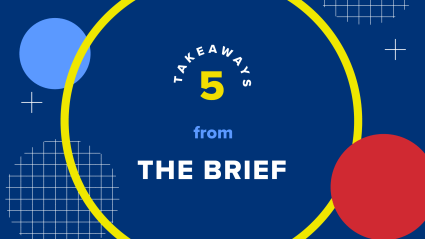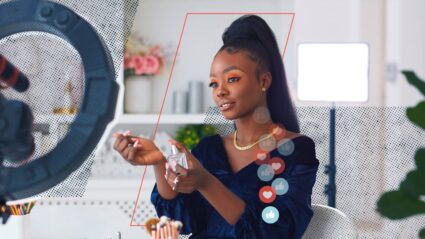It’s no surprise that Gen Z and millennials have taken center stage for marketers in the 2020s. As the new kids on the block, these younger generations have increasing buying power and an outsized influence on pop culture today.
But brands that dial in on young adults risk missing out on a major consumer cohort: Gen X, baby boomers, and other older adults. Older audiences may not be the hot topic on TikTok (although that may be changing), but over-forty customers make up a large segment of the US population–and they have money to spend.
Businesses that leverage these powerful older consumers have a major opportunity to get new high-value customers, especially when other companies fail to target them.
Why brands shouldn’t count older generations out
Marketers have a problem when it comes to aging populations. People over fifty make up over half the consumer spending in the US, but most advertising campaigns don’t reflect that reality: only 5% to 10% of marketing budgets go to gaining the attention of older adults, according to the Harvard Business Journal.
Marketing has traditionally been aimed at young consumers because these generations define what’s current. Businesses don’t want to be perceived as old-fashioned, behind the times, or out of touch, so their advertising tends to lean into younger people’s interests.
Companies may also assume that older generations will be harder to market to because they’re more set in their ways and harder to influence, but that’s not necessarily the case–aging populations today are interested in new experiences and increasingly present online.
This is a mistake for brands looking to grow their bottom lines. Because they’ve had more time to build their wealth, Gen X and baby boomers are a major financial force in the US: Boomers had over 50% of household wealth and Gen X had 29% as of 2021, according to the Federal Reserve.
As the US population over fifty continues to expand, brands that aren’t targeting older adults are only leaving more money on the table. The over-fifty portion of the population is expected to increase by 34% between now and 2030, while the 18-49 segment will grow only 12%, according to Nielsen.
While it may make sense for certain businesses to stay focused on young consumers, most brands shouldn’t count older groups out from their marketing narratives.
Gen X and baby boomers on social media
If your brand is ready to reach older customers, social media is a good place to start. Gen Z may be the most talked-about online population right now, but older people are also on social media in increasing numbers. The share of Boomers and their elders using social media increased by 10 percentage points from 2012 to 2020, while use among young people stayed flat.
Despite this, most marketers are still overlooking their older audiences on social media. Nearly a third of TikTok users are Gen X, but a mere 5% of brands are investing in influencer marketing to reach them.
Advertisers looking to court older consumers should consider the different needs and interests of these groups when planning creative. Partnering with influencers who already have audiences aligned with the customer personas you’re looking for can help you find the right way to approach these new audiences.
When looking for creators, you should focus on choosing influencers from the generations you’re targeting. Gen X viewers preferred campaigns featuring Gen X creators. That adds up since older people are often underrepresented in online advertising and influencer marketing relies on the bond between the audience and a creator they find relatable–often someone similar to them.
Once you’ve chosen the right partners for your campaign, you can leverage their style and knowledge of the demographic. Gen X and baby boomer influencers already know how to make content that appeals to older folks, so let them take the lead on sponsored posts.
L’Oréal Paris saw success targeting older customers when they enlisted influencers aged forty-five to eighty-four to promote their Age Perfect Rosy Oil-Serum, appealing to older women by focusing on a positive attitude toward aging.
Finding the right messaging for older audiences
When creating campaigns aimed at older adults, brands need to break down outdated stereotypes of what older people look like or are interested in. Older generations today don’t see themselves as fitting media portrayals of frail and sedentary old people–they’re living vibrant lives filled with new experiences, and they’re attracted to brands that understand that.
To connect with them, brands should feature older people as they really are. A good example of this is Airbnb’s “Bonnie and Clyde” campaign, which showed an older couple on an adventure through pictures that wouldn’t look out of place in a twenty-something’s Instagram photo dump.
Rather than focusing on anti-aging messaging, many older people today are looking to embrace grey hair, wrinkles, and everything else that comes with aging. That means rejecting old-school aspirational messaging in favor of more realistic campaigns featuring everyday people. Just like authenticity online can pull in Gen Z customers, real humans with real flaws make for more interesting advertising for those in Gen X and beyond.
Advertisers targeting older people should also try appealing to nostalgia. Marketing themed on the good old days works just as well for these audiences as it does for Gen Z; Gen X and baby boomers are just nostalgic for slightly earlier times, like the 80s or early 90s.
Callbacks to 80s and 90s aesthetics or pop culture moments, done right, can get these generations interested in new products by associating them with positive memories of years gone by. Brands can tap into nostalgia through inside jokes about past events, nostalgic music, or partnerships with iconic celebrities of previous eras.
#CrystalPepsi is back in stores across the U.S. Grab your own bottle now, dudes! Radical! pic.twitter.com/sv1zRODj7r
— Pepsi (@pepsi) August 16, 2016
No matter what route you take to reach your older customers, remember to set aside budget to test different campaigns. Ads that work for younger generations may not have the same impact for older ones, so brands that have been courting Gen Z and millennials in recent years may need to try several options to find the right advertising tactics for Gen Xers, baby boomers, and beyond.







Responses